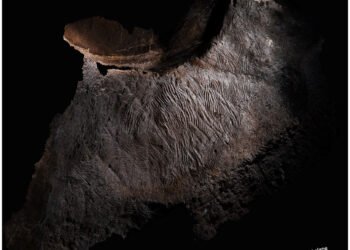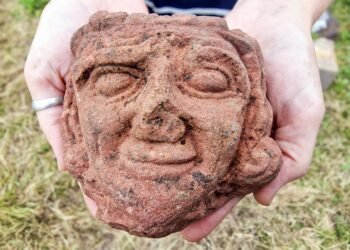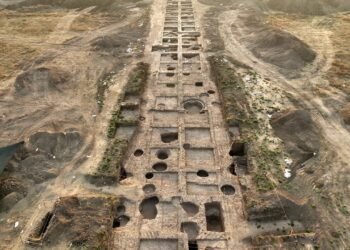Archaeologists in Croatia have uncovered a remarkable archaeological site in the village of Stobreč, near Split. The discovery, made during a pre-construction excavation, includes a well-preserved Greek rampart, along with structures dating from different historical periods, providing a priceless insight into the ancient Greek settlement of Epetion.

The excavation, led by Dr. Marina Ugarković from the Institute of Archaeology in Zagreb, unearthed a Greek wall that spans 230 (70 meters) feet in length and rises over 10 feet (3 meters) at its highest points. “This is an extraordinarily monumental discovery, representing the best-preserved Greek wall in Croatia,” Ugarković emphasized during the site’s presentation, drawing comparisons to significant archaeological finds worldwide. The Greek wall, with its impressive size and state of preservation, stands as one of Croatia’s most important Greek archaeological relics.
The archaeological site, which had been listed as historically significant but was only partially explored, dates back at least 2,000 years to the Hellenistic period. It reveals multiple layers of settlement, spanning from prehistory through Roman times and the Middle Ages. This discovery extends the known timeline of the settlement’s existence, with evidence pointing to human activity in the region as far back as the Middle Bronze Age, approximately 3,500 years ago. “The settlement of Epetion existed much earlier than previously believed,” Ugarković explained, noting that these findings reshape the historical understanding of the area.
The town of Stobreč, about 250 miles south of Croatia’s capital, Zagreb, and nestled along the Dalmatian coast, was originally founded as a Greek colony in the 4th century BCE. Over time, it became a prominent trade hub for the Roman Empire. The site was identified as a key area for archaeological interest during a preventive investigation conducted by the Conservation Department in Split. Archaeologists were called in ahead of a construction project, ensuring that any significant historical findings were unearthed before development proceeded.

The recent excavation is the most extensive exploration of Epetion since the 1960s when parts of the city wall were first discovered by archaeologists Mladen Nikolanci and Dr. Aleksandra Faber. The new discoveries, including a megalithic structure with a double gate, suggest that the ancient city extended further than previously thought.
Minister of Culture and Media Dr. Nina Obuljen Koržinek, who visited the site along with State Secretary Krešimir Partl, said: “This is a discovery of immense value, both for the local community and the global understanding of ancient history.” The minister emphasized that the Croatian government is committed to protecting and showcasing the site for future generations.

Conservators Silva Kukoč and Ivica Pleština, who are overseeing the site, highlighted that the area had long been recognized as having archaeological potential. Still, the extent and significance of the discoveries were unexpected. Further research is planned to ensure that the site is carefully studied and preserved. Minister Obuljen Koržinek assured that her ministry, along with the Split Conservation Department and the Directorate for the Protection of Cultural Heritage, will continue to closely monitor the ongoing excavations.























